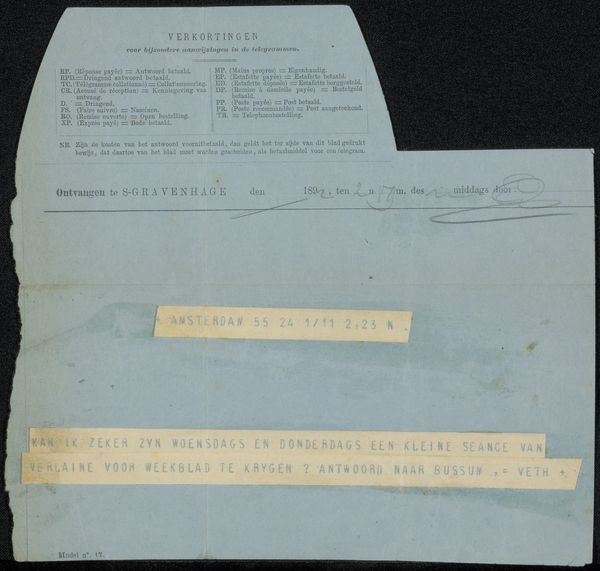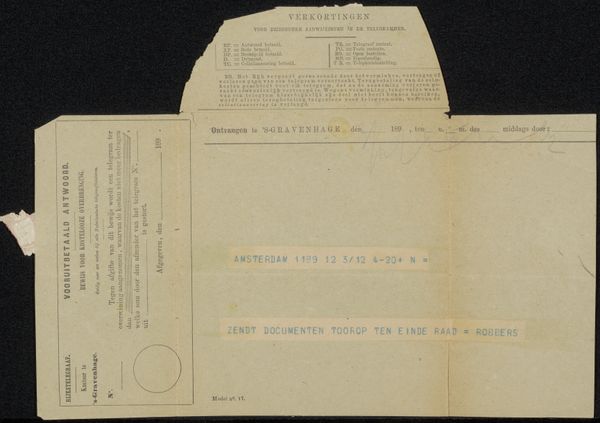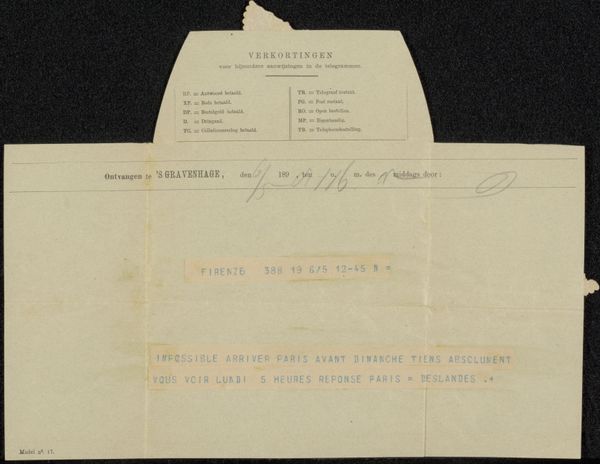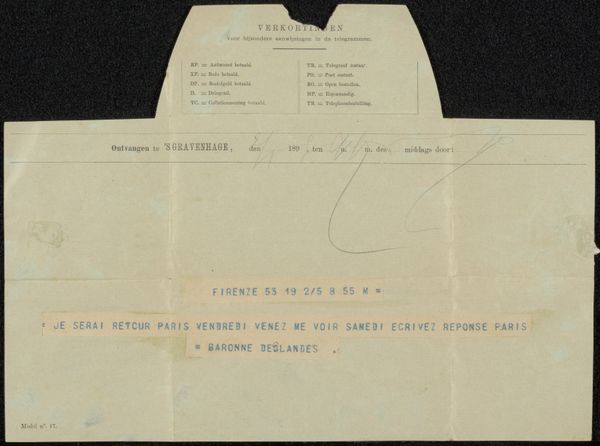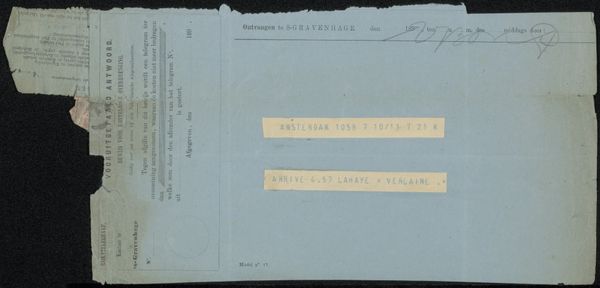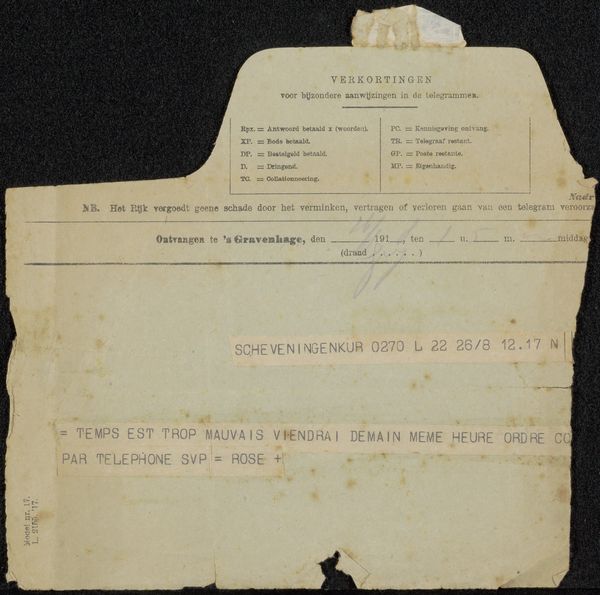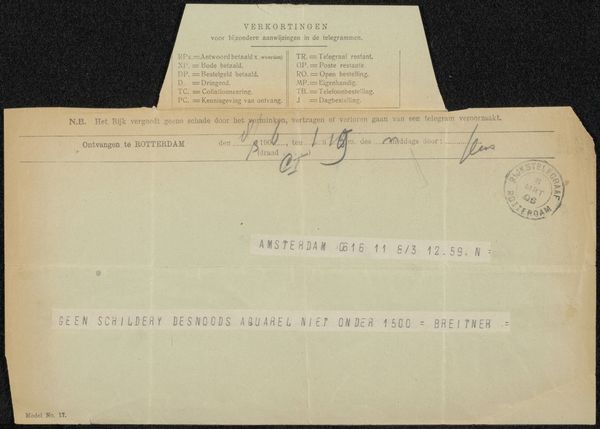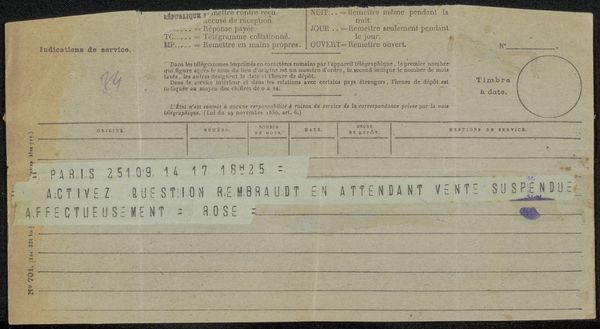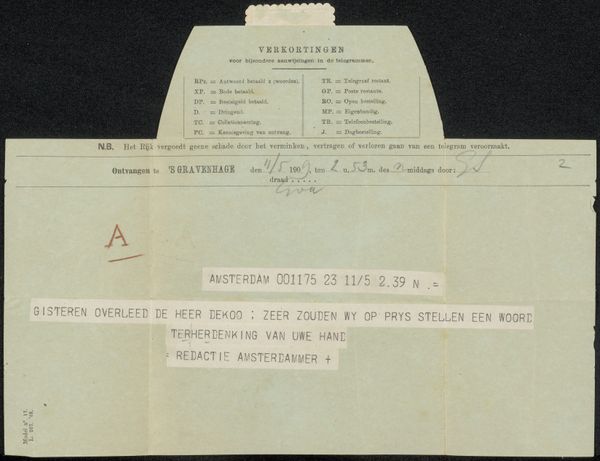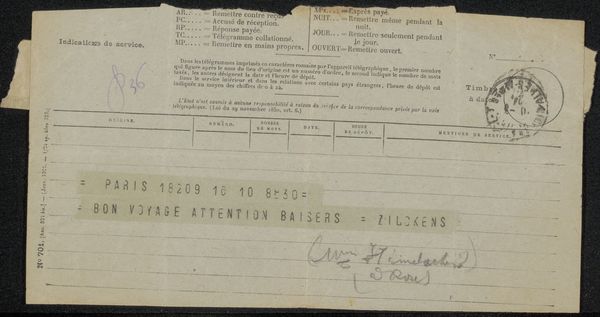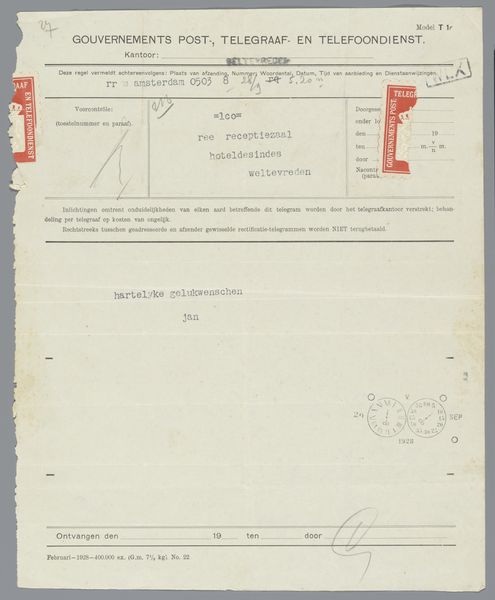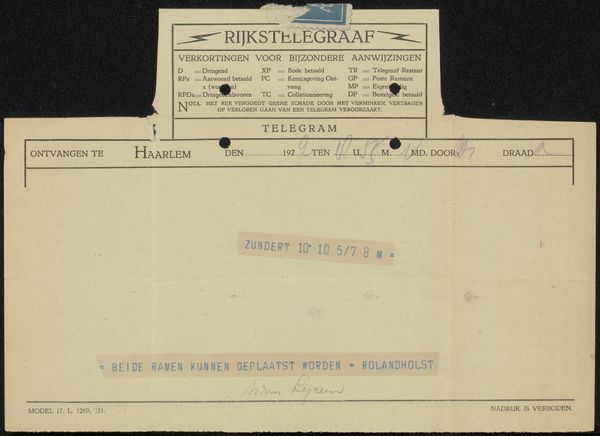
graphic-art, print, textile, paper, ink
#
graphic-art
# print
#
textile
#
paper
#
ink
Copyright: Rijks Museum: Open Domain
Editor: So, this is "Telegram aan Philip Zilcken," potentially from 1892, by Albert Verwey. It seems to be a mix of graphic art, printmaking, and textile elements, made with paper and ink. The object has such an ordinary feel - an old telegram. It's interesting how it's being presented in an art context. What do you make of it? Curator: I'm drawn to consider how the "means of communication," the telegram, exists here both as subject and object. Think about the social context; Telegrams were once a vital technology impacting the pace and distance of human interactions. What was once a cutting-edge service that shrunk distances can be looked back on and reconsidered through the lens of material culture. How does its materiality—the specific paper, the ink, the printed text—affect your understanding of its message? Editor: I didn't think about how integral telegrams once were; seeing the paper and faded print makes it feel tangible. I guess it's easy to forget how physical communication once was. Curator: Exactly. And consider Verwey's choice to represent it as art. What does it say about artistic value, elevating an ephemeral communication into something enduring, challenging the traditional separation between daily life and fine art? Also, I wonder how this work contrasts to mass produced art of today. Editor: That's such an interesting contrast! Looking at it through those ideas makes me think about how artists choose "ordinary" materials to highlight the process of making art itself. Curator: Precisely. We're no longer looking *just* at the message. We're thinking about communication and consumption. It invites you to ponder what messages we might immortalize from *our* everyday lives.
Comments
No comments
Be the first to comment and join the conversation on the ultimate creative platform.

